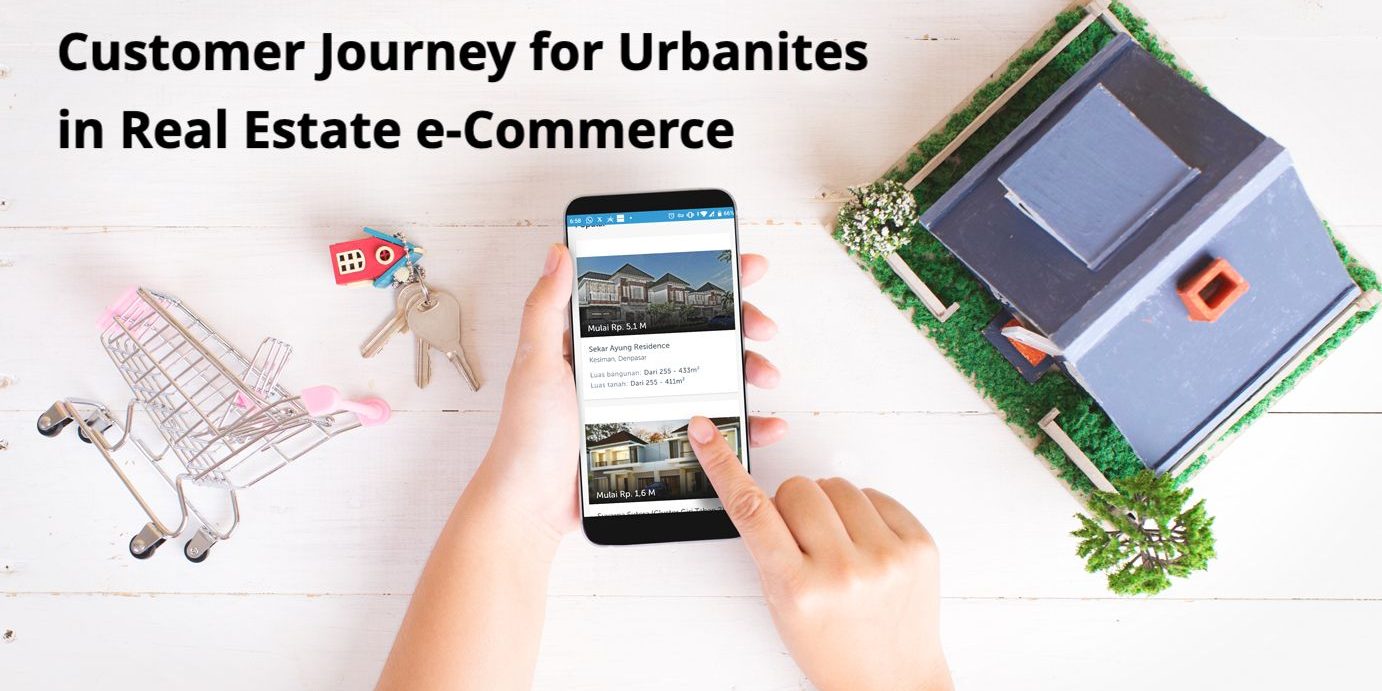Indonesia has a rapid growth for several economic sectors. However, it does not apply to real estate sector. According to the GDP growth rate published by Indonesia’s Central Bureau of Statistics (BPS), real estate sector only able to increase GDP by 5.49% in the first quarter of 2019. Additionally, financial statements of several real estate companies show a perilous income decline from 2015 to 2018 in average rate of 0.37 per year.

While real estate sector is still moving in sluggish motion, it certainly hold a great opportunity for startup players in Indonesia to take part in. However, providing online purchasing on the website isn’t yet to be proved as an excellent alternative to boost sales. Therefore, the StratX Insight Team further investigates this problem by conducting research to customers located in the Greater Jakarta area, to find out the process they went through in purchasing a property and how they obtain information about the property.

The qualitative analysis shows that there are five stages of the process that property customers go through in make purchasing decisions. The five stages are divided into two phases, passive and active. In passive phase, customers are exposed to property information distributed through various media channels both online and offline. When the information sent is within customer interest, they’ll enter the active phase by searching, assessing, and sharing the product that has been purchased.
The first stage begins with attractive offline publications such as billboards and brochures, also through social media, that draw people’s attention and interest. The high mobility level of Indonesian people become one of the reasons why offline publications are effective to increase people’s awareness of any real estate, including ones with higher level of income.
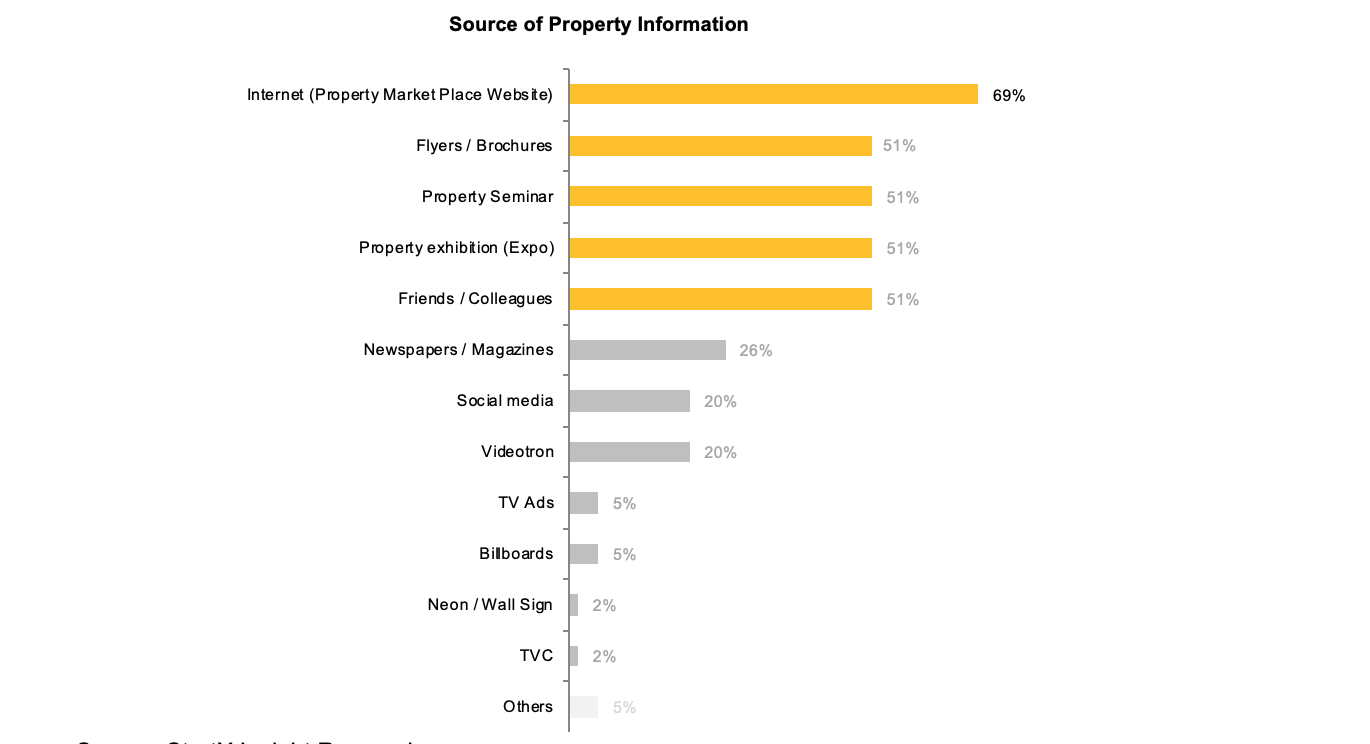
There are a lots of media that can be used by potential customers in collecting information related to their desired property, both through online or offline media. According to our research, in urban areas of Indonesia, it can be seen that the internet or online property purchasing websites rank first as a source of property information with a percentage of 69%. However, it turns out that the use of online property purchasing website is still considered unfavourable because it has a low scale of media information effectiveness (2.5 out of 5).
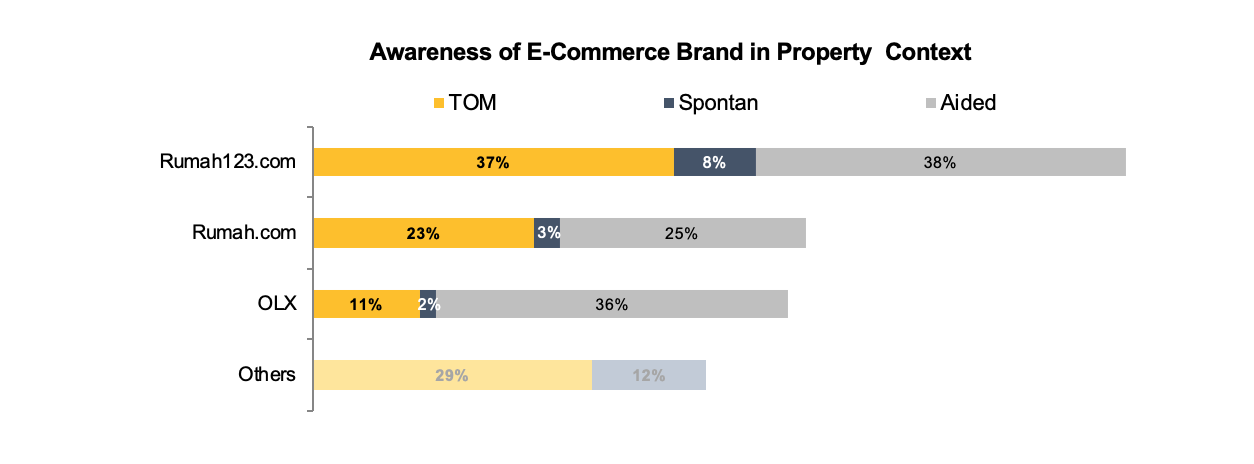
Among the online property business websites, Rumah123.com is the most widely known website in terms of Top of Mind (TOM) or Aided followed by Rumah.com and OLX.co.id. In the other hand, OLX is also perceived as being included in e-commerce property for customers despite of its generic features. For now, it can be assumed that there is no e-commerce property with strong distinctiveness, so the e-commerce property brand is still perceived as a website for buying and selling ordinary goods.

Rumah123.com and rumah.com are perceived as buying and selling houses websites and strongly perceived as websites related to real estate. In the other hand, some respondents did not know / had never accessed rumah.com. Furthermore, OLX still perceived as a website for buying and selling goods, not property.
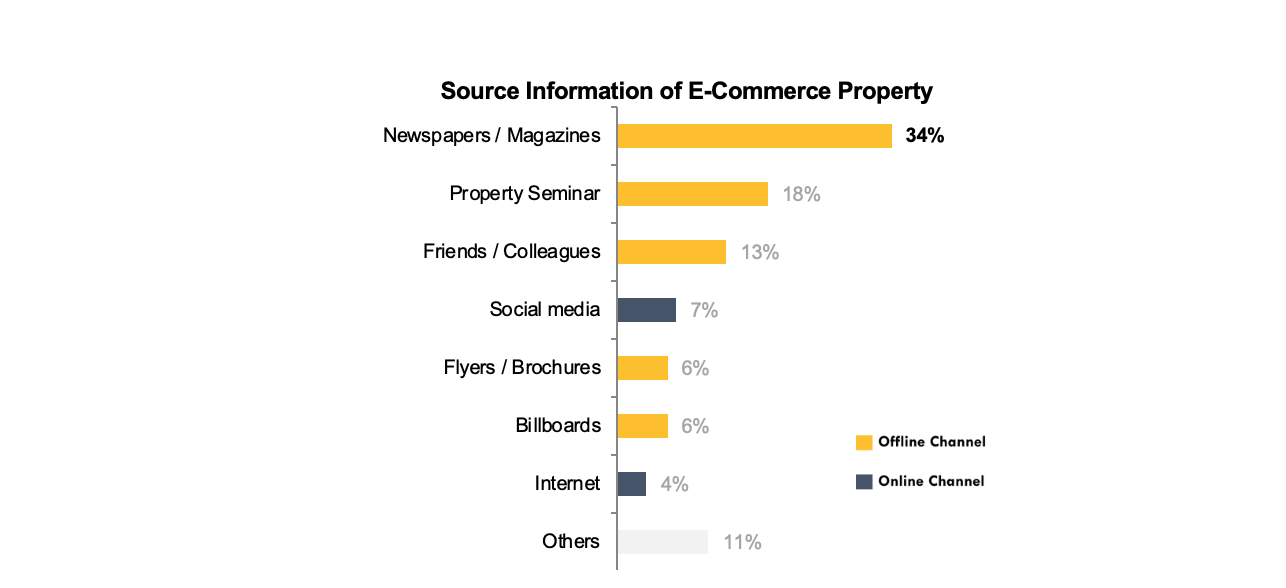
Offline media is become a source of awareness for known / visited property e-commerce. In the other hand, below the line channel, such as Seminar, and Colleagues are still needed by customers as a source of website/ online information. Furthermore, digital media is considered not to provide much information about e-commerce property.
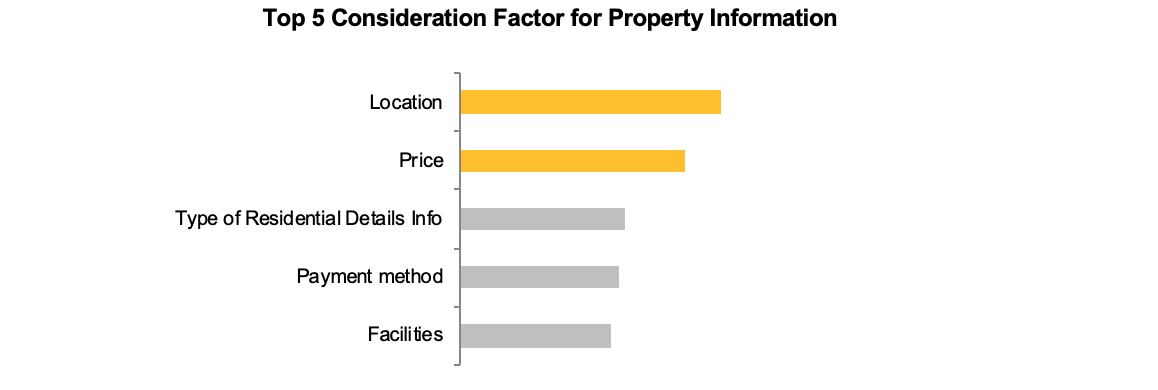
Overall, customers have 5 (five) consideration factors to decide to buy property. In finding overall property information, the accuracy of location and real-time price information is the two most important things for respondents. In the other hand, information on the type of housing and facilities is considered quite important.
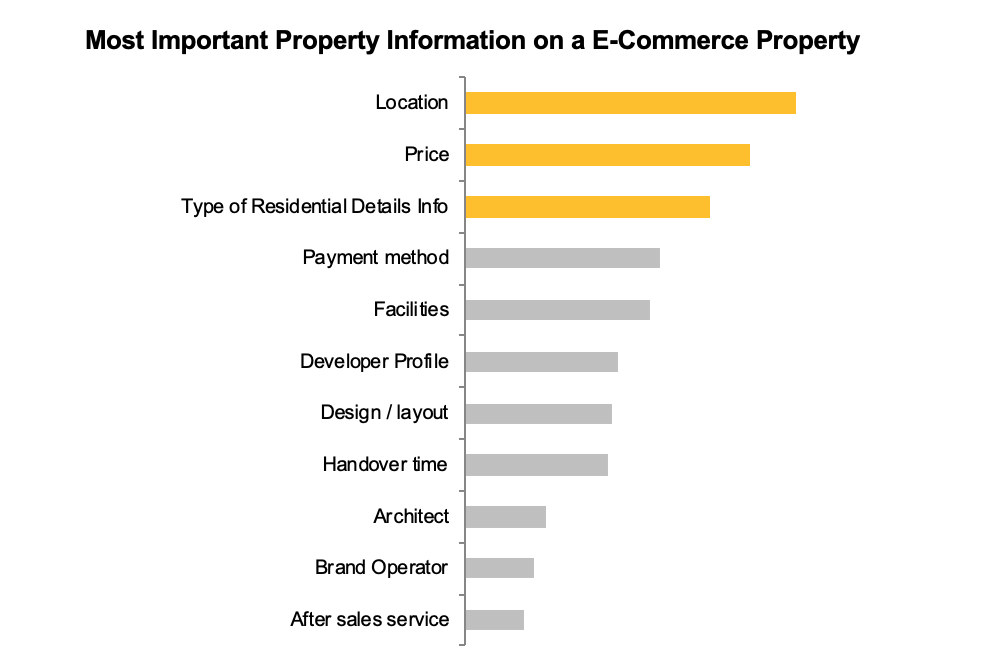
We can see the similarities between the top five information needed by potential customers with information being accessed by customers on the website which are location, price, type of property, payment methods, and facilities.
The most important variable to take into consideration is the location, which also will determine another aspect such as price. The aspect of location includes accessibility. The closer access to nearest public facilities or other desired facilities, the more customer’s willingness to buy that property,
Customers will buy property according to the budget they have set. Thus, the price becomes one of the information that must be provided by real estate businesses in order to help customers find their property of choice. The budget basically will adjust to their income level. When comparing one property with another, customers are usually more inclined to a relatively cheaper alternative. Thus, promotion or discounts provided by sellers will also increase the desire to make a purchase.
Another aspect that takes into customer’s consideration is detailed information such as the size of the building, type of building, etc. This aspect will usually depend greatly on customer preferences that are usually diverse. For example, there are customers who prefer properties that have a bigger outdoor yard, but there are also customers who wish for just a little space for a yard.
In approaching the target customer, e-commerce property brands must focus on making it easy to find location-specific and appropriate information for customers, followed by price information in real-time. Those consideration factors drive customer’s interest to collect more information about the property both form online and offline media sources.
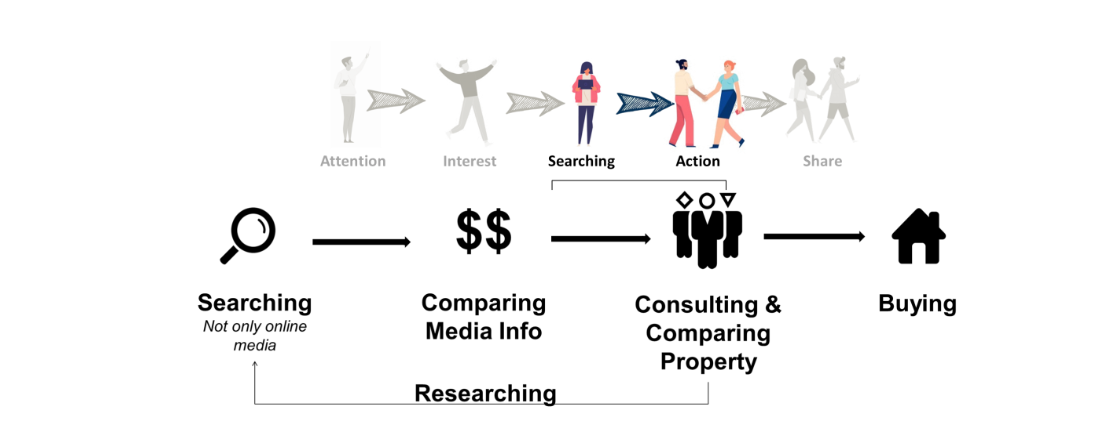
This breakdown customers journey show that after customer interest for several information on e-commerce property, they will not immediately buy the property. There are several journeys that will influence the purchase decision.
In approaching the target customer, e-commerce property brands must focus on making it easy to find location-specific and appropriate information for customers. Followed by price information in real-time. Those consideration factors drive customer’s interest to collect more information about the property both form online and offline media sources.
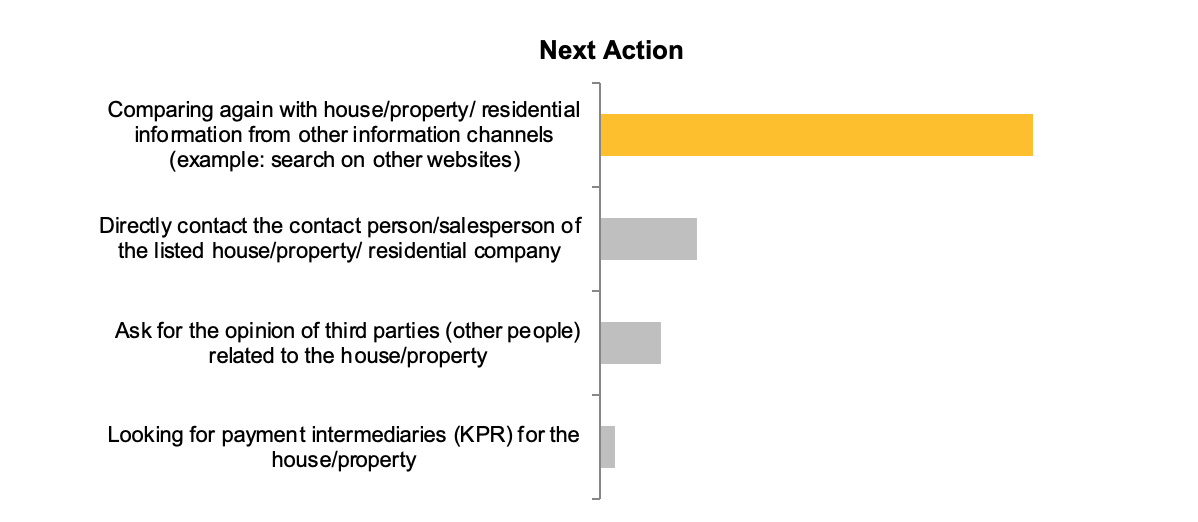
In point of searching and collecting information, potential customers will conduct a comparison from different sources the information they have obtained from one source with other sources. Other than that, customers compile more information by doing a consultation with their closest peer to negotiate the choice of property they will buy.
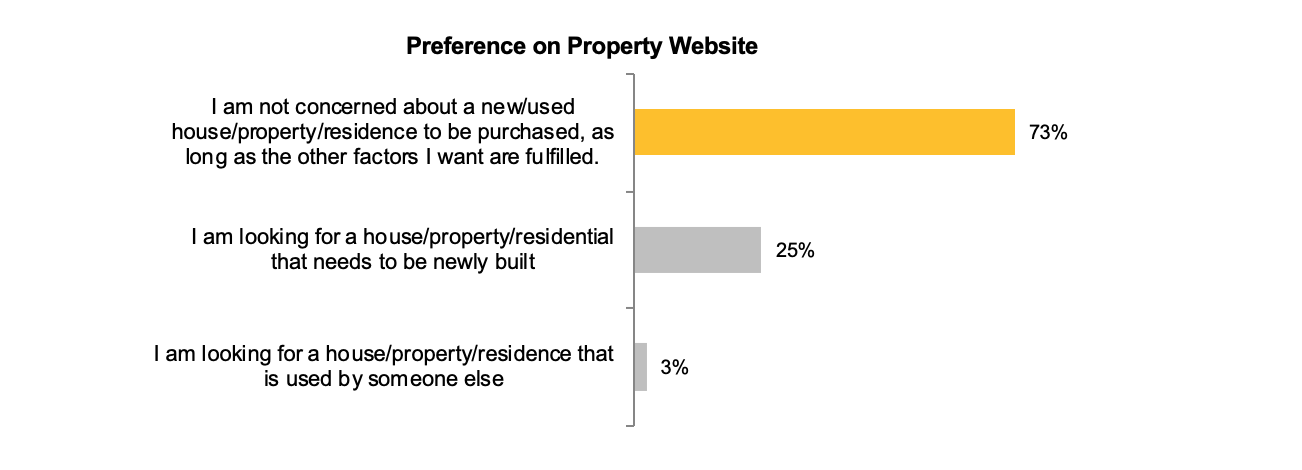
The next journey after searching and collecting information regarding the desired product will be the action or the purchasing decision. From the exploration, if the property meets the desired criteria, the customer will carry out purchasing decisions. Interestingly, there is a post-purchase activity carried out by customers, that is sharing the impression and testimony regarding purchases made. This will have an indirect impact on future potential customers because it may become a reference for them. Thus, there is a multiplier effect from one property purchase to another property purchase.
From the whole customer journey, customers still have problems in deciding to purchase a property due to the limited media information that they can access both offline and online. Starting from the accuracy and availability of information regarding the location, affordable price, promotion or discount availability, detailed information, and customers’ perceptions of the seller’s objectivity related to the information. In summary, there are several pain-points that typical customers feel during the purchase journey.

There are some negative perceptions about e-commerce property information, there are home availability info real-time, inaccurate data, and the information that came out did not match what was sought. As a result, information from the website tends to only be used as a large of land area and price benchmark information in a specific location before comparing with other sources of information.
However, real estate business basically has the opportunity to help customers provide information, not only in terms of size and price of the property but also information that can support and be a strong preference for customers in making their decision. But, this situation is still an obstacle for the e-commerce property platform. Thus, it will be a challenge for the e-commerce property platform to build a brand position and distinctiveness to be a different among competitors.

